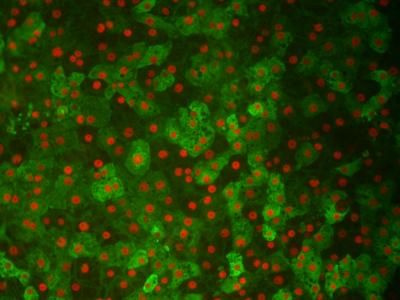Diagnostic blood test can identify rare lung disease
Researchers at the University of Cincinnati (UC) and Cincinnati Children's Hospital Medical Center have found that a certain blood test can successfully identify lymphangioleiomyomatosis (LAM) in some patients, eliminating the need for surgical lung biopsy to make a diagnosis. These findings are being published in the journal Chest .
LAM is a rare but serious lung disease that affects women, causing shortness of breath and lung collapse, called a pneumothorax. The disease occurs when an unusual type of cell invades the lungs and causes tissue destruction by creating holes or cysts in the lung. It can be fatal.
Lisa Young, MD, lead author on the study and researcher at UC and Cincinnati Children's, says that these findings will help with diagnosing LAM and may also be helpful in screening for LAM in women with Tuberous Sclerosis Complex (TSC), a genetic disorder that causes tumors to form in many different organs. TSC is a risk factor for the development of LAM.
In this study, the test was used to analyze the amount of a specific protein — vascular endothelial growth factor-D, or VEGF-D — in patients' blood. VEGF-D promotes the growth of lymphatic vessels and blood vessels and can be involved in the spread of cancer.
Researchers performed VEGF-D testing in 195 women and found that serum VEGF-D levels were significantly greater in women with LAM than in women with other lung diseases or healthy individuals. When they prospectively evaluated the VEGF-D test performance in women prior to knowing their diagnosis, the test showed high accuracy for diagnosis of LAM.
"We concluded that a serum VEGF-D level of greater than 800 pg/mL (picograms, or one-trillionth of a gram, per milliliter) in women with typical cystic changes on a high-resolution computed tomography (CT) scan is diagnostically specific for sporadic LAM and identifies LAM in women with TSC," Young says. "However, negative VEGF-D results do not exclude the diagnosis of LAM."
Organizations
Other news from the department science

Get the life science industry in your inbox
By submitting this form you agree that LUMITOS AG will send you the newsletter(s) selected above by email. Your data will not be passed on to third parties. Your data will be stored and processed in accordance with our data protection regulations. LUMITOS may contact you by email for the purpose of advertising or market and opinion surveys. You can revoke your consent at any time without giving reasons to LUMITOS AG, Ernst-Augustin-Str. 2, 12489 Berlin, Germany or by e-mail at revoke@lumitos.com with effect for the future. In addition, each email contains a link to unsubscribe from the corresponding newsletter.



















































